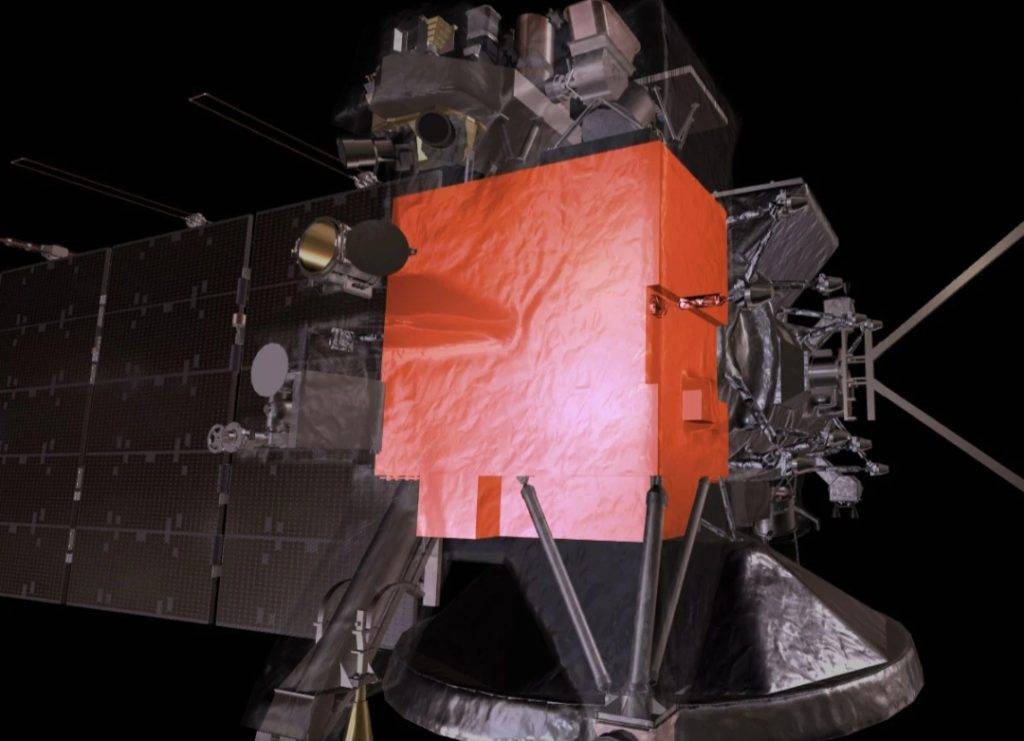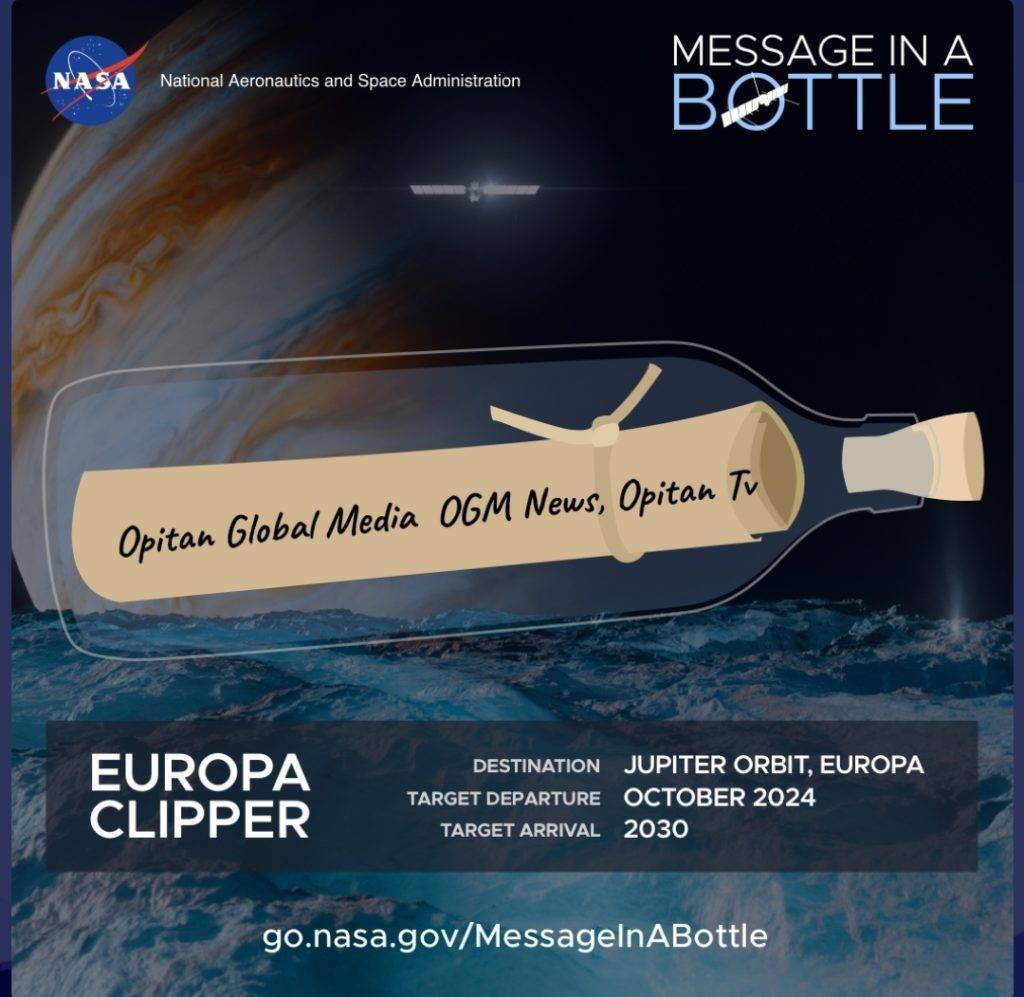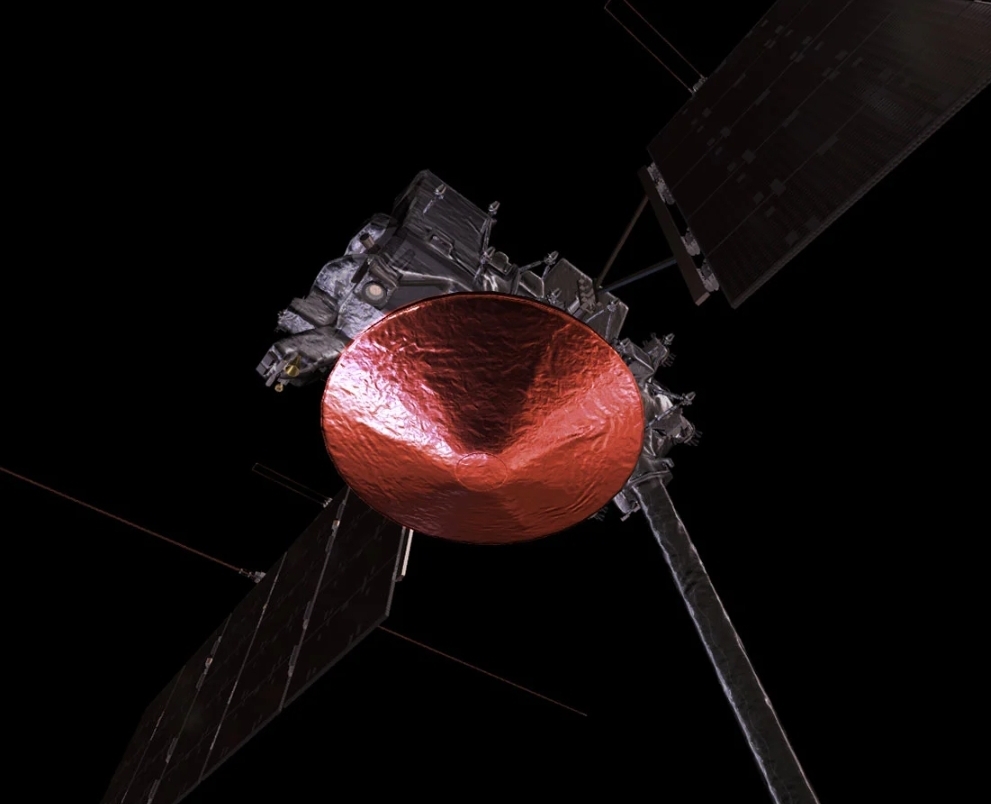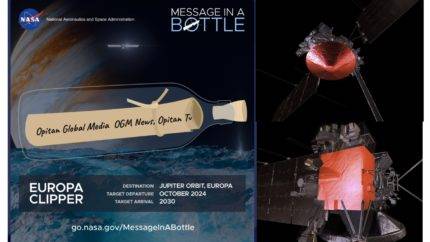In a rare and exciting opportunity, NASA’s Europa Clipper mission is offering members of the public the chance to send their names into deep space aboard the spacecraft bound for Jupiter and its intriguing moon Europa. The “Message in a Bottle” campaign, which allows participants to have their names etched on a dime-size silicon microchip, is rapidly approaching its deadline on December 31, 2023. Already, an impressive 700,000 names have been submitted, demonstrating the global enthusiasm for space exploration.
Technicians at NASA’s Jet Propulsion Laboratory in Southern California will utilize cutting-edge technology, employing an electron beam to stencil the names onto microchips, with each line of text being smaller than 1/1000th the width of a human hair. These microchips, along with a metal plate engraved with a poetic tribute, will ride aboard the NASA’s Europa Clipper spacecraft, creating a symbolic “message in a bottle” that will journey 1.8 billion miles to Europa, where an ocean lies beneath a frozen outer shell.
A Poetic Touch: Ada Limón’s ‘In Praise of Mystery’ to Accompany Names
Adding a touch of artistry to this interplanetary endeavor, the silicon microchip carrying the names will be affixed to a metal plate engraved with an original poem titled “In Praise of Mystery.” This evocative verse, composed by U.S. Poet Laureate Ada Limón, serves as a celebration of the mission. As the spacecraft embarks on approximately 50 close flybys of Europa, the engraved poem and the multitude of names will be akin to a cosmic message in a bottle.
The inclusion of a poet laureate’s work emphasizes the intersection of science and art in human exploration, as the Europa Clipper aims to unravel the mysteries hidden beneath the icy surface of Jupiter’s moon. The poem, encapsulated in the metal plate, will bear witness to the spacecraft’s half-billion-mile journey, offering a poetic connection to the scientific mission.
NASA’s Europa Clipper‘s Ambitious Goals for Exploration
Beyond the symbolic gesture of the “Message in a Bottle” campaign, the Europa Clipper mission holds ambitious scientific goals. As the spacecraft orbits Europa during its mission, it is set to log a remarkable half-billion miles. The payload of science instruments on board will diligently gather crucial data on Europa’s subsurface ocean, icy crust, and atmosphere. These observations aim to determine the potential habitability of Europa and answer the overarching question of whether life could exist in the ocean hidden beneath its frozen shell.

Scheduled for launch in October 2024 after completion at NASA’s Jet Propulsion Laboratory, the NASA’s Europa Clipper mission represents a significant milestone in humanity’s quest to understand the potential for life beyond Earth. The spacecraft’s exploration aligns with NASA’s longstanding tradition of sending inspirational messages on spacecraft, akin to the iconic Voyager mission of 1977, fostering global curiosity and imagination.⁷
Engaging the Public: #SendYourName and Mission Souvenirs
As the “Message in a Bottle” campaign captivates the public’s interest, NASA encourages active participation. Interested individuals can sign up, read the poem, and even listen to Ada Limón recite it through the provided link (https://go.nasa.gov/MessageInABottle). Participants are also invited to share their enthusiasm on social media using the hashtag #SendYourName.
Furthermore, the campaign website offers a unique opportunity to create and download a personalized souvenir—an illustration of one’s name on a message in a bottle against a background featuring Europa and Jupiter. This initiative not only engages the public in the excitement of space exploration but also commemorates their involvement in a historic mission that seeks to unravel the mysteries of Jupiter’s icy moon, Europa.

NASA’s Europa Clipper: Uniting Poetry, Names, and Science in a Celestial Journey
In the convergence of technology, art, and scientific exploration, NASA’s Europa Clipper mission stands as a testament to humanity’s insatiable curiosity about the cosmos. The “Message in a Bottle” campaign not only involves the public in a unique way but also infuses a poetic touch into the mission, connecting the scientific endeavor with the human spirit. As the spacecraft prepares for its groundbreaking journey to Europa, it carries not only the names of thousands but also the collective imagination and aspirations of a global audience eager to explore the mysteries that lie beyond our planet.
NASA’s Europa Clipper‘s Scientific Objectives: Mysteries of Europa’s Ocean World
NASA’s Europa Clipper mission is set to embark on a groundbreaking journey with the primary goal of unraveling the mysteries hidden beneath the icy surface of Jupiter’s moon, Europa. The mission has three main scientific objectives: to understand the nature of Europa’s ice shell and the ocean beneath it, explore the moon’s composition, and delve into its geology. By achieving these objectives, scientists aim to gain critical insights into the astrobiological potential for habitable worlds beyond Earth.
NASA’s Europa Clipper‘s detailed exploration involves dozens of close flybys of Europa, each at altitudes as low as 16 miles above the surface. This strategic approach will allow the spacecraft to gather precise measurements and investigate different locations on the moon. As the spacecraft orbits Jupiter, it is scheduled to make nearly 50 flybys, providing comprehensive data to further our understanding of Europa’s enigmatic ocean world.
NASA’s Europa Clipper‘s Impressive Spacecraft Design: A Marvel of Engineering
The Europa Clipper spacecraft is a testament to NASA’s engineering prowess, designed to be the largest planetary mission spacecraft in the agency’s history. Equipped with massive solar arrays and radar antennas, the spacecraft is essential for collecting sufficient light for its power needs in the distant Jupiter system, over five times farther from the Sun than Earth. Standing at about 16 feet in height, the spacecraft spans over 100 feet with its arrays deployed, boasting a dry mass of 7,145 pounds.
The spacecraft’s robust design is crucial for enduring the harsh radiation environment around Europa, trapped within Jupiter’s magnetic field. To protect its payload and electronics, Europa Clipper features a thick-walled vault made of titanium and aluminum. This radiation shield, pioneered by NASA’s Juno spacecraft, effectively mitigates the impact of high-energy atomic particles, ensuring the longevity and functionality of the spacecraft’s instruments.

Life Beyond Earth, Dream Turning Reality?
Europa, with strong evidence suggesting a subsurface ocean beneath its icy crust, emerges as a promising candidate for habitable environments beyond Earth. NASA’s Europa Clipper‘s mission aims to determine the existence of places below Europa’s surface that could support life. The spacecraft’s payload includes a comprehensive suite of instruments, such as cameras, spectrometers, ice-penetrating radar, magnetometer, and gravity measurements.
These instruments are strategically designed to produce high-resolution images and composition maps, search for subsurface water, and unlock clues about Europa’s ocean and deep interior. A thermal instrument will pinpoint locations of warmer ice and potential water eruptions, while others will analyze the composition of particles in Europa’s thin atmosphere. The scientific arsenal aboard Europa Clipper represents a formidable effort to explore and understand the potential habitability of this intriguing moon, providing answers to age-old questions about life beyond our planet.
Table of Contents
Discover more from OGM News NG
Subscribe to get the latest posts sent to your email.














